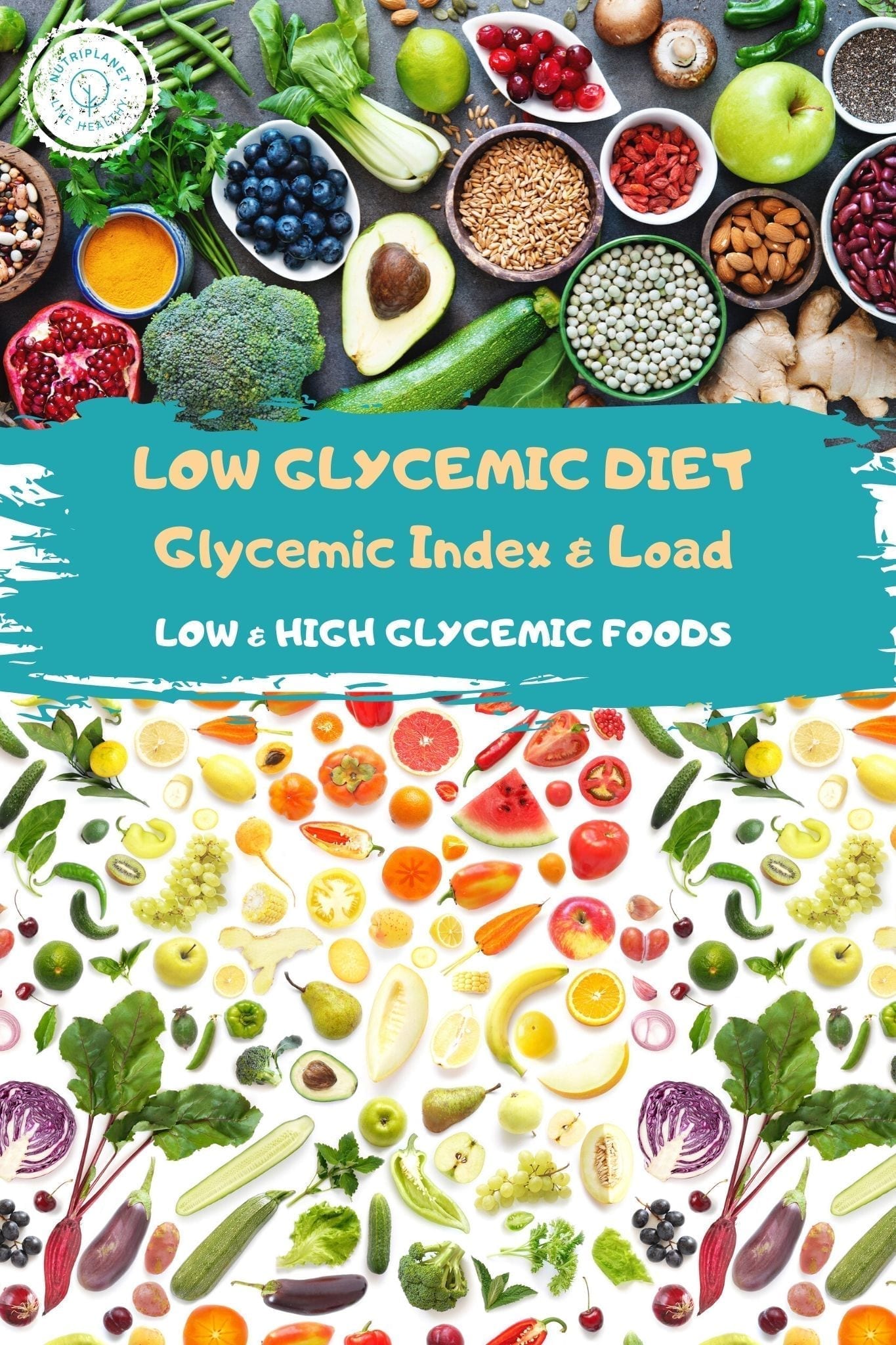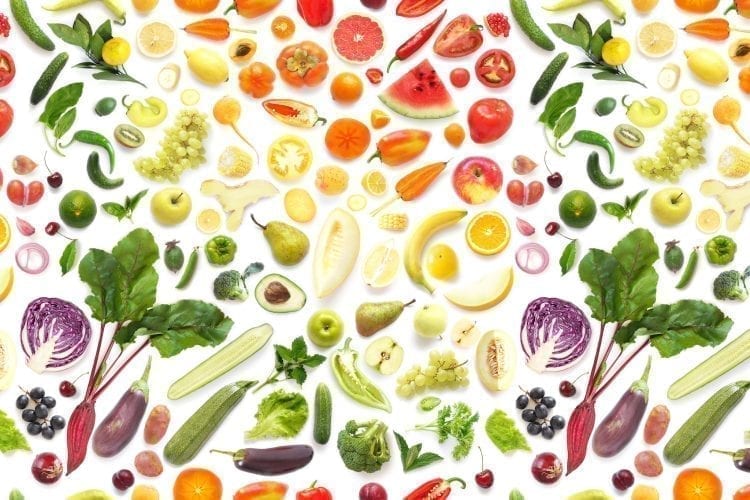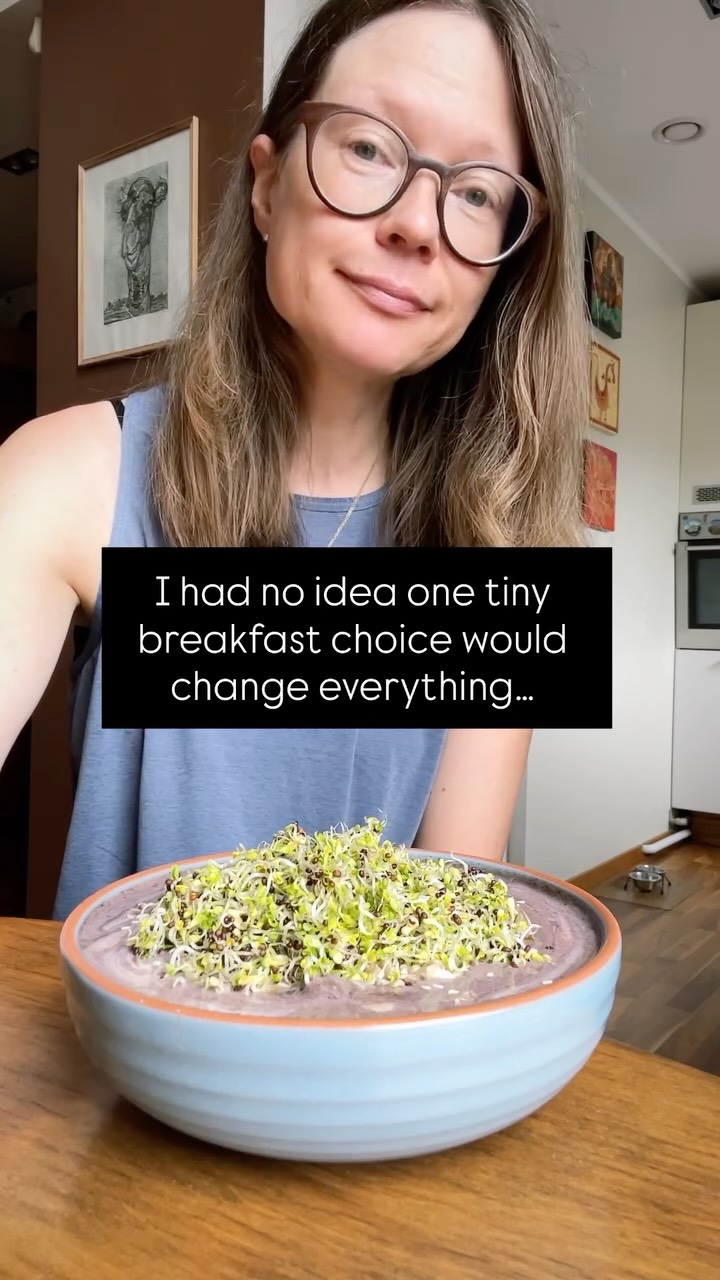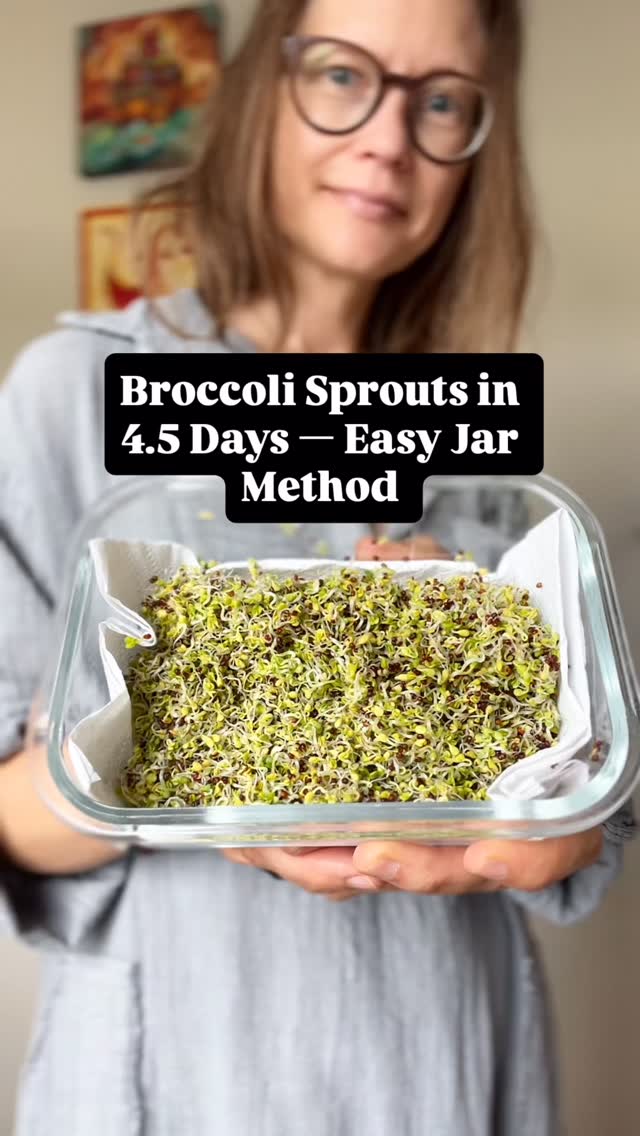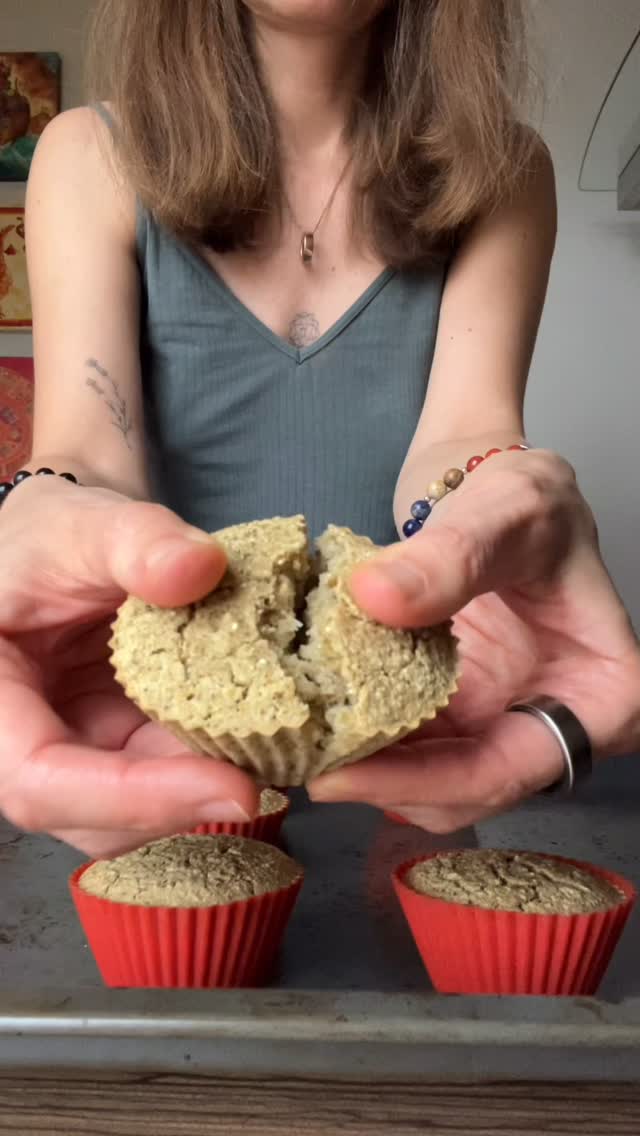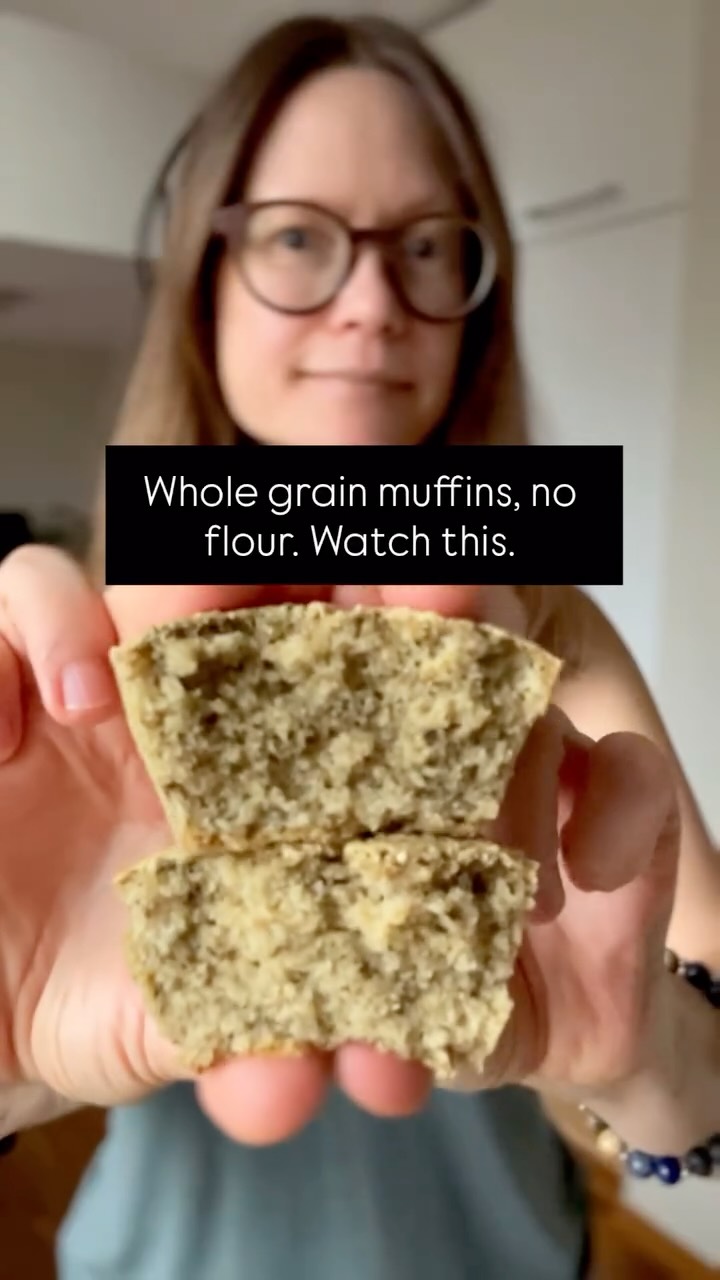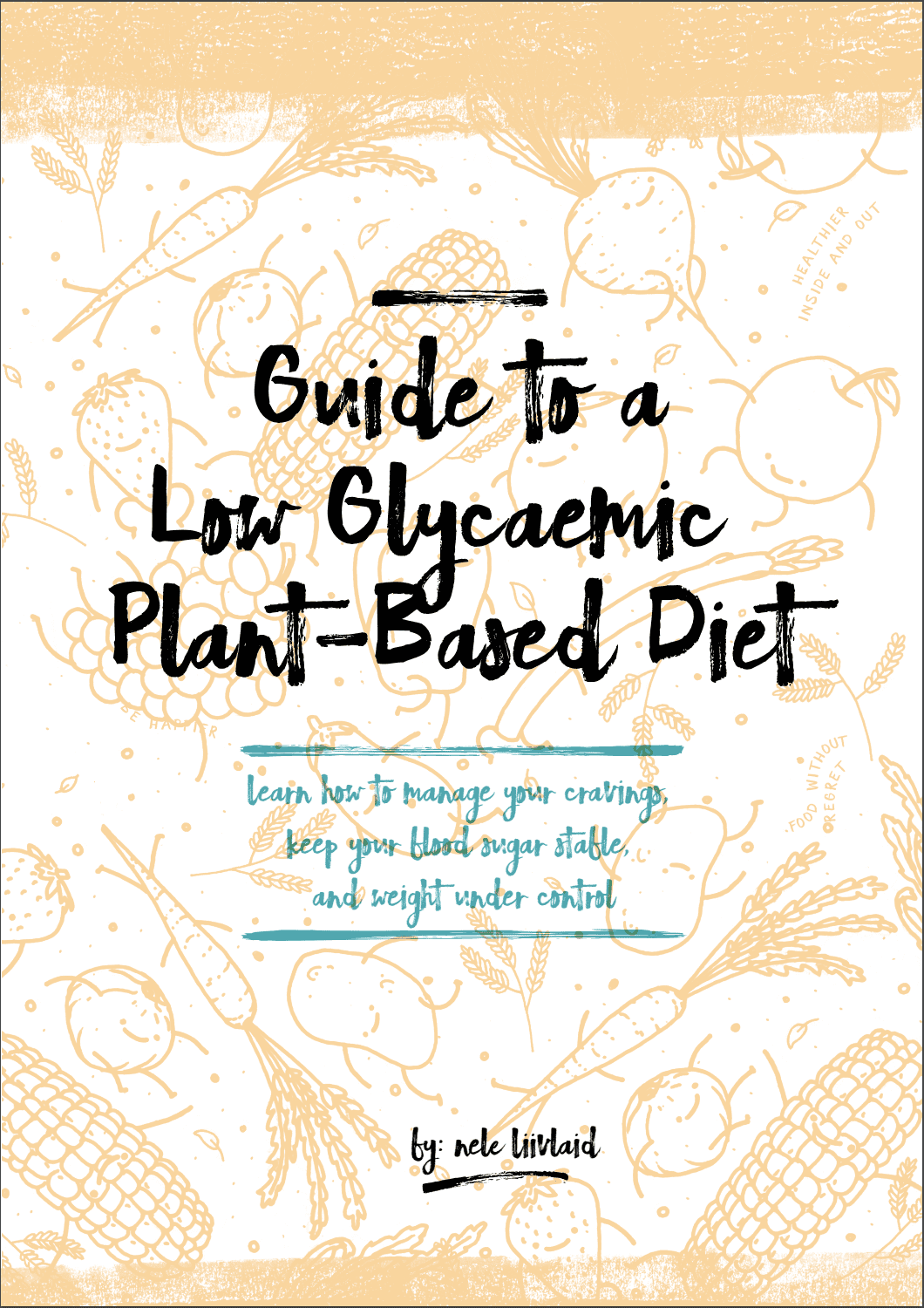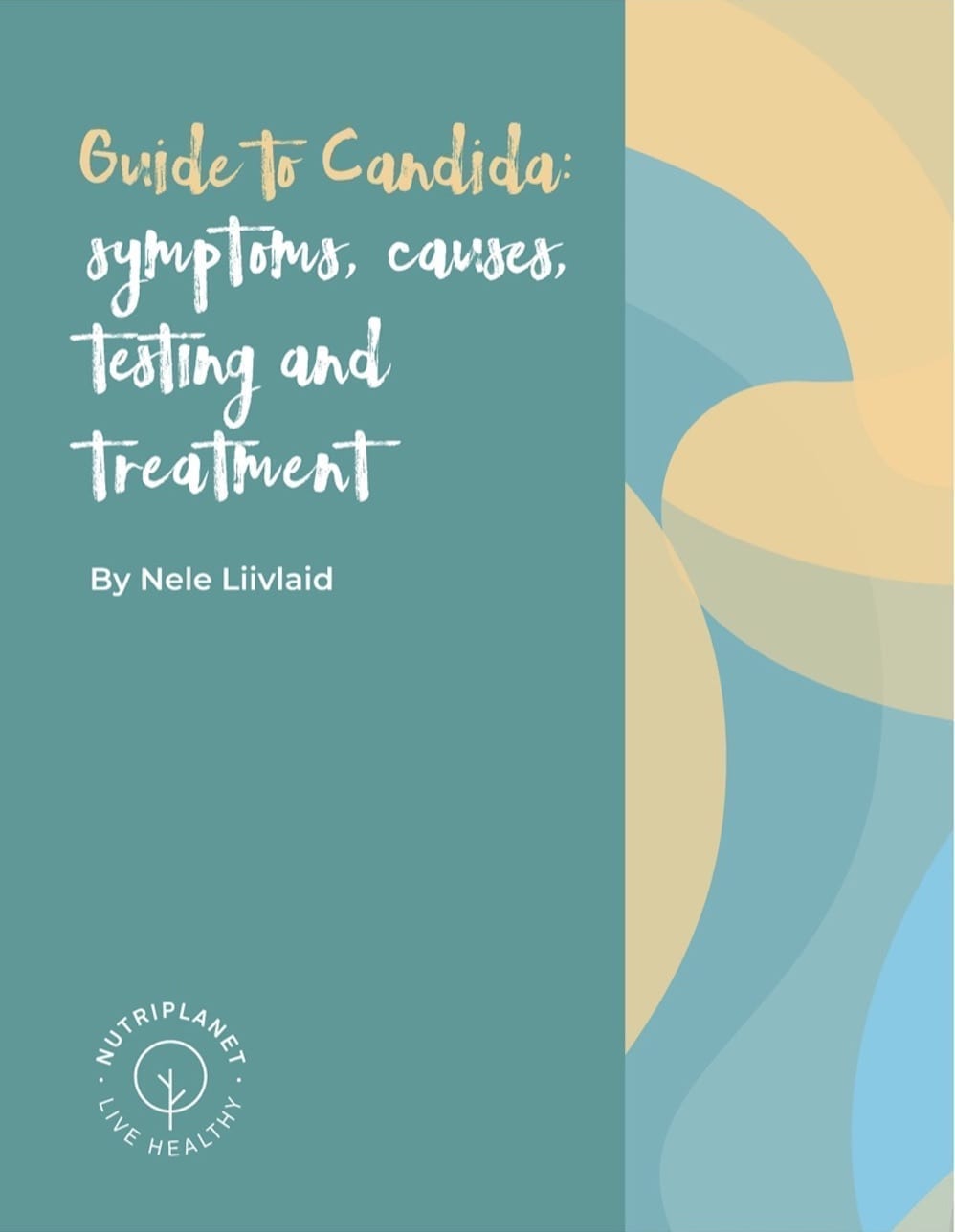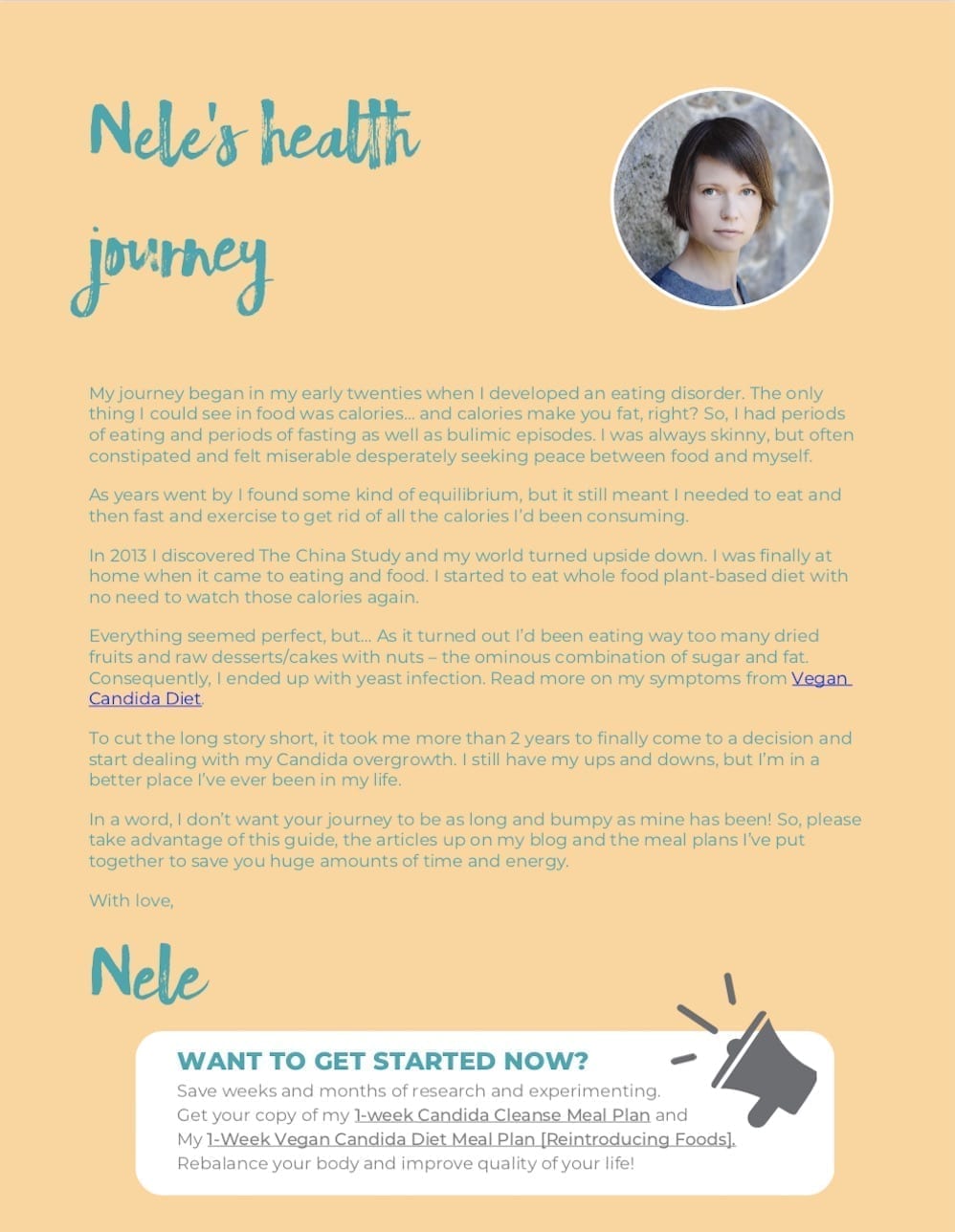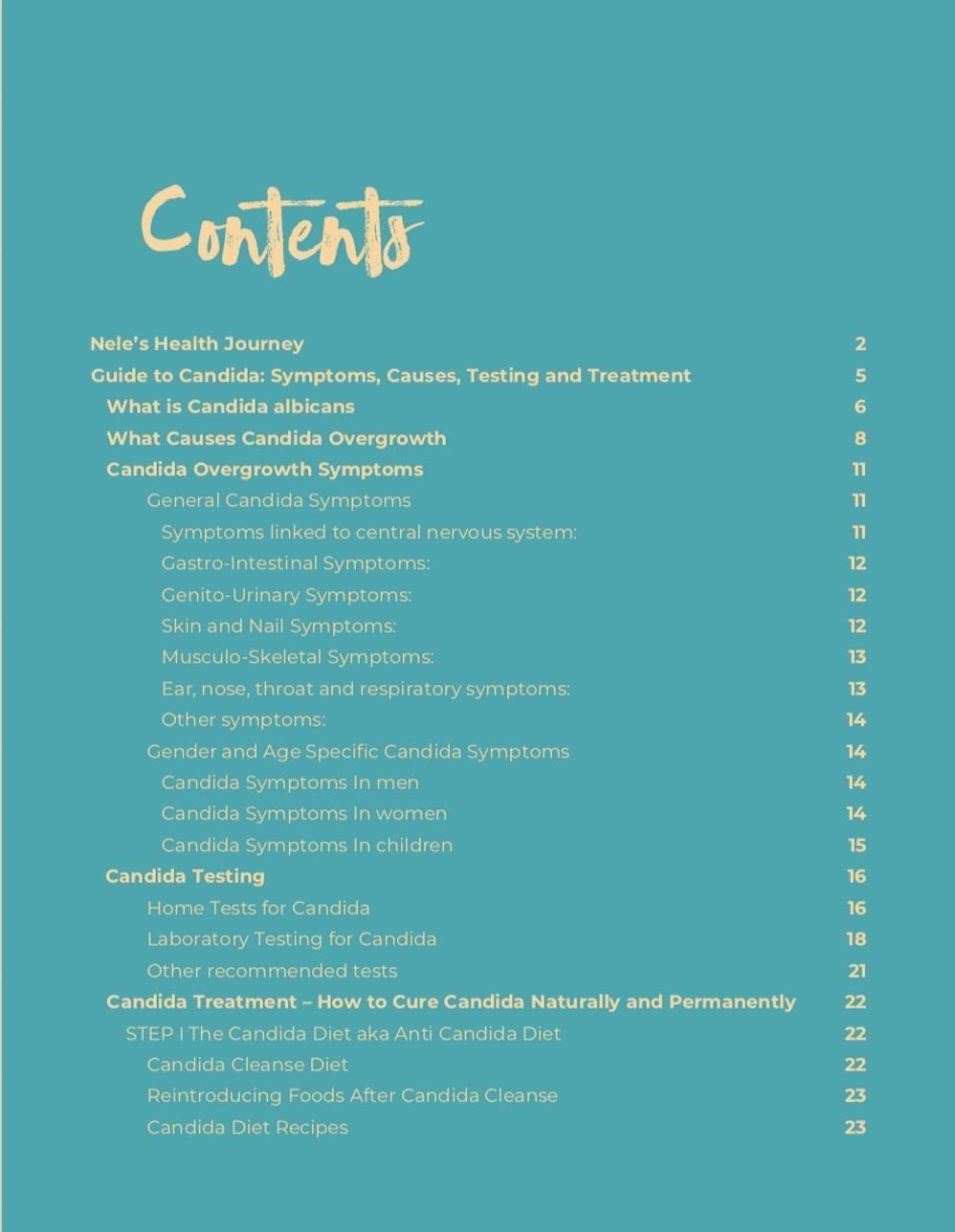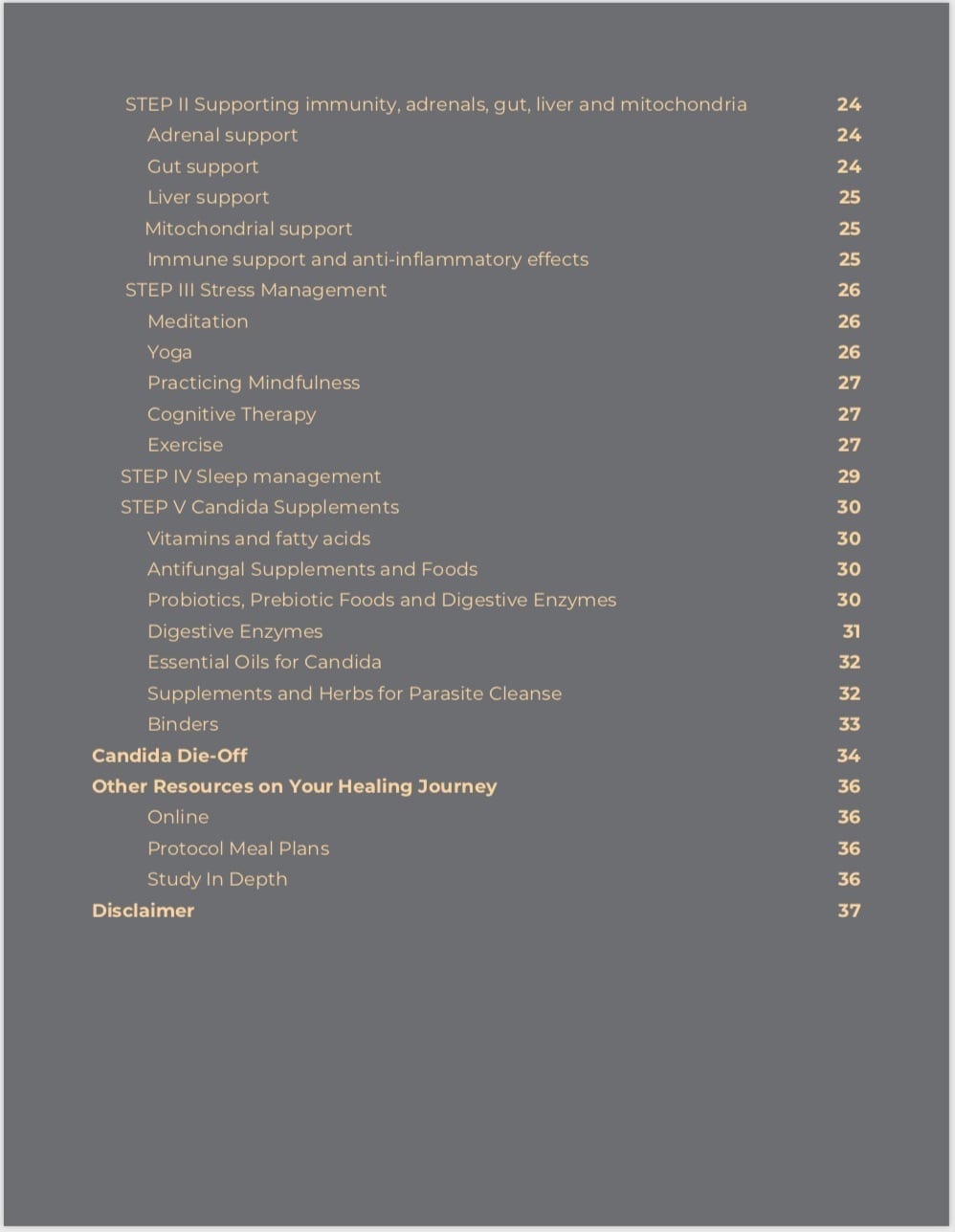Learn what is low glycemic diet, which are low glycemic foods and high glycemic foods. Read about glycemic index and glycemic load and why those matter.
Download my FREE Guide to a Plant-Based Low Glycemic Diet
Table of contents
- What Are Glycemic Index and Glycemic Load
- What is a Low Glycemic Diet?
- Disease Prevention with Low Glycemic Diet
- Limitations of Glycemic Load and Glycemic Index
- More Trouble with GI and GL?
- The Five-to-One Rule
- Foods to Eat on a Low Glycemic Diet
- Tips on Lowering the Glycemic Load of Some Whole Plant Foods
What Are Glycemic Index and Glycemic Load
Did you know that not all carbohydrates are the same? Some of them create much greater fluctuations in blood sugar levels than others. It’s important to remember that processed foods and foods containing lots of sugar (quick carbohydrates) are rapidly absorbed into the blood and raise our blood glucose levels immediately. Consequently, a fast drop in blood sugar levels follows, causing irritability, difficulties in concentration, a sudden surge of tiredness, fogginess and cravings for something sweet or another cup of coffee. And if your blood sugar goes too high, your brain signals your pancreas to secrete more insulin. Insulin brings your blood sugar back down, but primarily by converting the excess sugar to stored fat. Also, the greater the rate of increase in your blood sugar, the more chance that your body will release an excess amount of insulin, and drive your blood sugar back down too low. [1]
People with diabetes have an even worse problem. Their bodies’ inability to secrete or process insulin causes their blood sugar to rise too high, leading to a host of additional medical problems. [2]
Also, people with Candida overgrowth and hormone imbalance must look after their blood sugar balance.
Glycemic Index
Don’t forget that balanced blood sugar levels don’t only depend on what you eat, but also how and when you eat. You’ve probably seen the abbreviation GI (glycemic index) before on food packages. This tells you whether the carbohydrate in the particular food is a “slow” or “fast” type of carbohydrate.
GI ≥ 70 is considered high,
GI 50-69 is medium,
GI ≤ 49 is low.
Glycemic Index values are determined experimentally by feeding human test subjects a fixed portion of the food (after an overnight fast), and subsequently extracting and measuring samples of their blood at specific intervals of time. [3]
The theory behind the Glycemic Index is simply to minimize insulin-related problems by identifying and avoiding foods that have the greatest effect on your blood sugar. [4]
Download my FREE Guide to a Plant-Based Low Glycemic Diet
Glycemic Load
What glycemic index doesn’t do is indicate how large the proportion of the carbohydrate is and how it’ll affect your blood sugar levels. The deficiency has led nutritionists towards the development of the improved index GL (glycemic load), which is the GI multiplied with the regular helping (portion) of the particular food. This index enables you to obtain a much better idea of the actual impact on the blood sugar level.
Glycemic Load is calculated this way:
GL = GI/100 x Net Carbs
(Net Carbs are equal to the Total Carbohydrates minus Dietary Fibre) [5]
GL ≥ 20 is considered high,
GL 11-19 is medium,
GL ≤ 10 is low.
What is a Low Glycemic Diet?
You’re eating a low glycemic diet, if you don’t get more than 20 GL points from one meal and not more than 100 GL points daily.
I’ll show you how easy it is to exceed those points. For example, 100 grams of rolled oats (dry weight) give 39 GL points. Now, many people make their oatmeal with 60-80 grams of oats. Simple calculations tell you that this translates into 23.4-31.2 points. After adding the fruits or even syrups and other toppings and you’re way above the suggested.
The main principles of low glycemic diet:
- Eat lots of non-starchy vegetables, beans, and fruits such as apples, pears, peaches, and berries.
- Consume grains in the least-processed state possible – prefer steel cut oats or whole oat groats to quick oats and whole grain berries or groats to processed and sweetened breakfast cereals. For example, prepare your porridge with quinoa berries rather than quinoa flakes that cook really quickly.
- Have 5 to 6 mealtimes a day. Besides main meals, you should also find time to enjoy 2 to 3 light snacks to avoid feeling hungry. A mid-afternoon snack always keeps a growling stomach at bay. Feeling full helps you at the grocery store too and fills your basket with healthy choices and not junk.
- Always eat breakfast, even when you’re in a hurry.
- Eat slowly and mindfully. Stop eating when you feel full. [6]
Disease Prevention with Low Glycemic Diet
Low glycemic diet may prevent the following diseases:
Type 2 diabetes mellitus
Conclusions from several studies suggest that low-GI and -GL diets might have a modest but significant effect in the prevention of type 2 diabetes.
Cardiovascular disease
Observational studies have found that higher glycemic load diets are associated with increased risk of cardiovascular disease, especially in women and in those with higher BMIs.
Gallbladder disease
Results of two studies indicate that GI and GL may be related to gallbladder disease. Namely, a higher dietary GI and GL were associated with significantly increased risks of developing gallstones.
Obesity
Both low glycemic diet and low-fat diet contribute to weight loss. While the consumption of a low-GL diet increased HDL-cholesterol and decreased triglyceride concentrations significantly more than the low-fat diet, the LDL-cholesterol concentration was significantly more reduced with the low-fat than low-GI diet. [7]
So, lose weight, but do it wisely – it’s not very smart to over consume foods high it fat (oils, nuts and seeds).
Limitations of Glycemic Load and Glycemic Index
As straightforward as it may sound, it’s not quite so simple or black and white with GL and GI diet. The reasons are as follows:
Still not enough data
GI values have so far only been determined for about 5% of the foods. Next, similar foods can have very different GI values, so it’s not always possible to estimate GI from either food type or composition. This means that each food has to be physically tested. Nutritiondata has derived a formula that can estimate the Glycemic Load for untested foods, based on comparative analysis with foods of similar composition.
Variations in GI measurements
Reported GI values are generally averages of several tests. Now, there’s nothing wrong with methodology, but individual measurements can vary significantly. For example, baked Russet potatoes have been tested with a GI as low as 56 and as high as 111! Also, the GI for the same fruit has been shown to increase as the fruit ripens. As GL is derived from GI value, it may vary to same extent.
GI values are affected by preparation method
Generally, any significant food processing, such as grinding or cooking, will elevate GI values for certain foods, because it makes them quicker and easier to digest. The change is even seen with subtle alterations of preparation, such as boiling pasta for 15 minutes instead of 10.
Food combining affects GI values
While the tests are done on individual foods, we consume those foods in combination with other foods that contain fibre, protein, or fat. The latter components will generally reduce the Glycemic Index of the meal.
People respond differently
People digest carbohydrates at different rates, so the glycemic response is individual and differs. In addition, one person’s glycemic response may vary from one time of day to another. And finally, different people produce different levels of insulin, even with an identical glycemic response. The glycemic response to a food or meal is the effect that food or meal has on blood sugar (glucose) levels after consumption. It is normal for blood glucose and insulin levels to rise after eating and then return again to fasting levels over a short period of time.
Reliance on GL or GI only can lead to weight gain
As foods that are higher in carbohydrates also tend to have higher glycemic load, people may lean too much towards high-fat foods that also happen to be low GI and GL. This way, however, you could easily end up over consuming fats and therefore calories. [8]
More Trouble with GI and GL?
Despite the new and improved GL, many food packages still only include the GI. To clarify the issue, I have examples of a few foods that have a dramatic difference between GL and GI.
When based only on GI levels, this casts a negative light on the foods that actually have nearly no impact on our blood sugar controls and related weight risks.
One such food is watermelon. Did you know it has a high GI but a low GL? It has a GI of 72, but a GL of 4 for a regular 120g serving, which is rather low.
Foods that have high water content (such as watermelon, cucumbers, apples, etc.) or fibre content (such as carrots, beetroots, etc.) won’t create dramatic blood sugar fluctuations despite their high GI values. This applies when eaten in moderation. The problem is when we eat foods with a higher GI or GL because these are the things we often over consume. The most common examples are various grain-based foods, potatoes, sweet potatoes, corn, etc.
In order to avoid the dramatic hills and valleys in your blood sugar levels, eat plenty of foods with low GL and a moderate amount of those with medium GL. For example, a banana has high GL, but if you add it to a smoothie with leafy green vegetables, berries, seeds and some plant-based milk, you’ll have a nutritious meal as well as good blood sugar control.
The Five-to-One Rule
I personally find Dr. Greger’s approach the simplest and most straightforward.
Since fullness or satiety factor is the most important when it comes to over eating, we must look for fibre in the food we consume. Fibre is the component that makes us feel full and satiated.
So, Dr. Greger came up with this brilliant five-to-one rule that you can test any foods or products up against. Simply divide the grams of carbohydrates by the grams of fibre in the same portion of the food you’re testing. If the result is 5 or less, go for it! You can read more on this topic from Dr. Greger’s book How Not to Die.
Download my FREE Guide to a Plant-Based Low Glycemic Diet
Foods to Eat on a Low Glycemic Diet
List of Low Glycemic Foods:
- Leafy greens (spinach, chard, collard greens, kale, lettuce)
- Non-starchy vegetables (asparagus, avocado, broccoli, Brussels sprouts, cabbages, cauliflower, celery, cucumber, eggplant, green beans, raw garlic, olives, onions, rutabaga, summer squashes, tomatoes, turnips)
- Some root vegetables (carrots, beetroot, turnip, rutabaga, parsnips)
- Nuts and seeds
- Berries
- Sprouts (sprouted grains and legumes)
- Oat bran and rice bran
- Soy products (if unsweetened) – tempeh, tofu, yogurt, miso
- Lentils, beans and chickpeas – black beans, mung beans Fruits like apples, pears, kiwi, watermelon and grapefruit
List of Medium Glycemic Foods:
- Winter squashes
- Sweet potatoes
- Whole grains (brown rice, oats, buckwheat, quinoa, amaranth, barley, spelt)
- Fresh fruit – pineapple, banana, mango etc.
List of High Glycemic Foods:
- All refined grains (white bread, white pasta, pastries etc, white rice)
- Dried fruit
- Starchy vegetables (white potatoes, corn)
- Sweeteners (refined sugar, cane sugar, date sugar, coconut sugar)
- Processed breakfast cereals (for example corn flakes) [9]
Download my FREE Guide to a Plant-Based Low Glycemic Diet
Tips on Lowering the Glycemic Load of Some Whole Plant Foods
- Let your cooked grains and potatoes cool down (best overnight) before consumption. It’s because cooking and cooling increases the resistant starch content. However, if reheated the effect is lost. Resistant starch is a type of carbohydrate that our digestive enzymes cannot break down in the stomach or small intestine. They, therefore, reach the colon intact, “resisting” digestion and feeding our good bacteria as well as keeping blood sugar stable, among other things.
- Sprout your grains and legumes before cooking. It’s very easy to sprout lentils, mung beans, chickpeas, brown rice, peas, quinoa, buckwheat. You may even eat sprouted buckwheat and mung beans in their raw state.
To sum it up, all the research basically meets at the same place – people benefit from a diet comprised of minimally processed whole plant foods that also tend to have lower glycemic load.
Disclaimer: this post contains affiliate links. As an Amazon Associate I earn from qualifying purchases.
